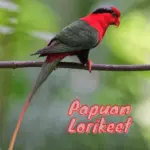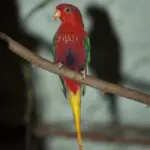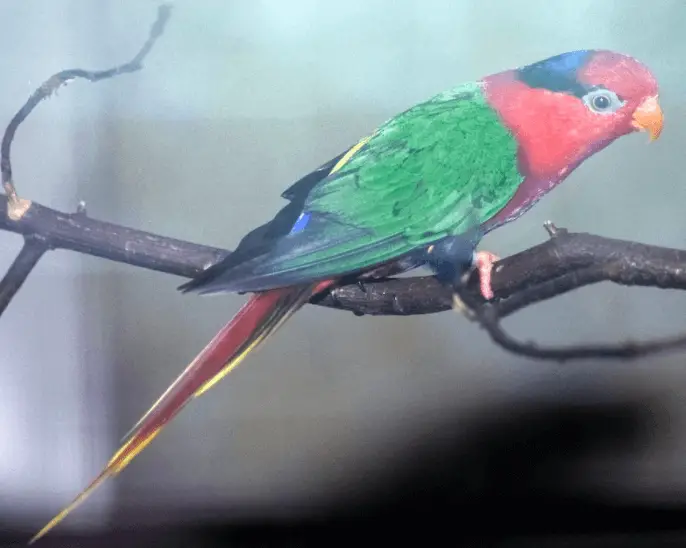
Josephine’s Lorikeet 23–25 cm. Plumage extensively red, with orange bill and legs, blue-streaked black patch from behind eye over rear crown and nape; black lower belly, flanks, and thighs;
olive-green mantle and wings, but red underwing coverts; small dull blue rump patch; outer tail feathers proximally green, distally yellow, tail tipped yellow, and underside all yellow.
Josephine’s Lorikeet Female has a yellow patch on the upper rump. Immature has a green or blue tinge in black. Race sepikiana has grey instead of blue in the crown, more black on the belly; cyclopum largely lacks any blue crown streaking and is only faintly dusky on the belly.
Editor’s Note: This article requires further editing work to merge existing content into the appropriate Subspecies sections. Please bear with us while this update takes place.
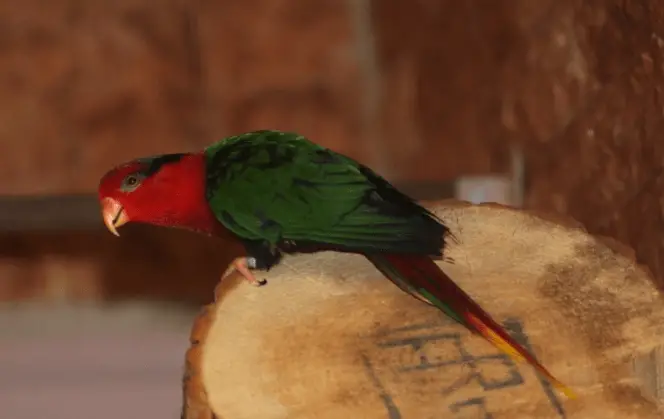
Three subspecies were recognized.
Subspecies
Charmosyna josefinae josefinae Scientific name definitions
Distribution
Charmosyna josefinae cyclopum Scientific name definitions
Distribution
Charmosyna josefinae sepikiana Scientific name definitions
Distribution
A pair of Josephine’s lorikeets (Charmosyna josefinae) at Loro Parque Fundacion
SOURCE: Video Ark
Distribution
Editor’s Note: Additional distribution information for this taxon can be found in the ‘Subspecies’ article above. In the future, we will develop a range-wide distribution article.
Habitat
Inhabits forest, forest edge, and partly cultivated land, generally at middle elevations, 760–1770 m.
Movement
No information, but possibly nomadic.
Diet and Foraging
Josephine’s Lorikeet feeding nectar, pollen, and flower buds, are taken in canopy trees and mid-story epiphytes; a climbing vine with large white flowers is noted to be important.
Sounds and Vocal Behavior
Josephine’s Lorikeet Calls include high-pitched screeches such as a shrill “skreet” and a quieter “tsit”, quite similar to C. pulchella.
Breeding
Josephine’s Lorikeet in breeding condition taken in Feb; no other information.
Conservation Status
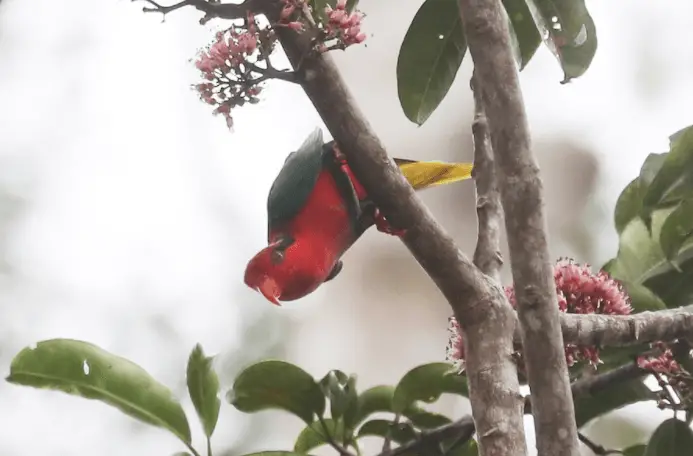
Not globally threatened. CITES II. Considered to be generally sparse and local throughout most parts of the range, although assessments may be biased by unobtrusive behavior.
Forest habitat is not threatened at present, but is likely to be affected in the future; trade is probably not a threat, although 697 were exported in 1986, mostly from Indonesia, and 459 in 1987, thereafter becoming much lower.
Other lorikeet types:

